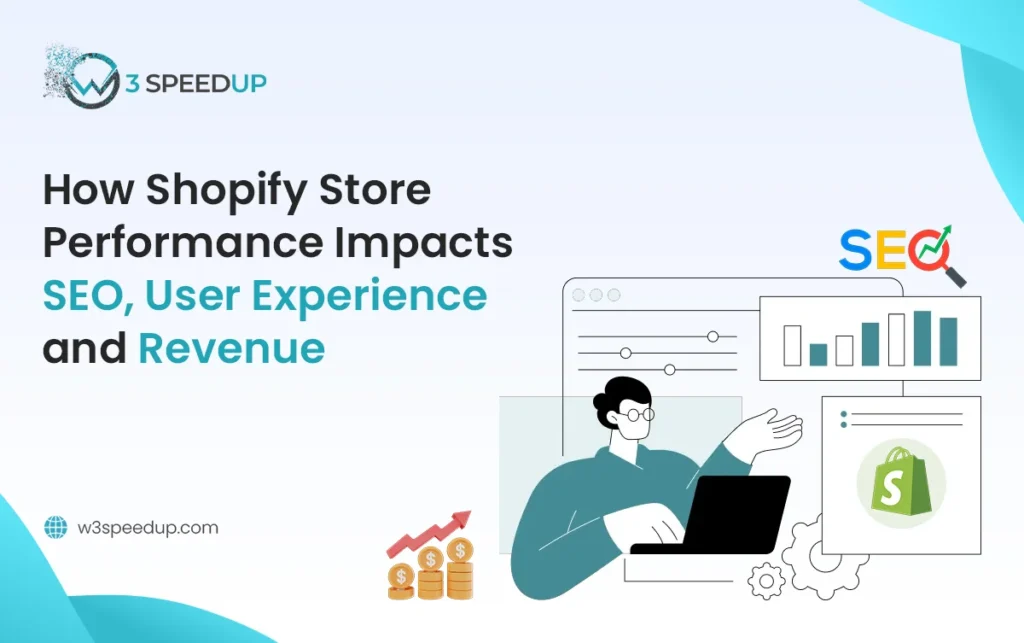In 2025, slow websites don’t just frustrate users – they kill sales. With online competition at an all-time high and customer expectations sharper than ever, website performance is now a core business metric, not just a technical concern.
For growing ecommerce brands, working with one of the best Shopify agencies UK can help ensure that site performance is treated as a strategic asset – not an afterthought.
Whether you’re trying to boost conversion rates, improve SEO, or reduce bounce rates, site speed has a direct, measurable impact on all three. This article explores why Shopify performance matters, what slows your store down, and how to fix it.
1. Why Shopify Store Speed Matters in 2025
A. Speed is a Ranking Factor
Google’s Core Web Vitals are still central to its algorithm, and slow load times negatively affect your ranking potential. Pages that load in under 2 seconds tend to perform better in search and attract more organic traffic.
B. Users Expect Instant Gratification
Studies show that:
- 1 in 4 visitors will abandon a page if it takes longer than 4 seconds to load
- 53% of mobile users leave a site that takes longer than 3 seconds
In eCommerce, that could mean thousands in lost sales.
C. Faster Stores Convert More
A Deloitte study found that a 0.1s improvement in site speed can increase conversions by up to 8.4%. Speed isn’t a technical bonus. It’s a conversion lever.
2. Common Causes of a Slow Shopify Store
Shopify is fast by design, but many store owners unintentionally slow it down. Here are common culprits:
a. Unoptimised Images
Large, uncompressed product images are the #1 performance killer. Always use WebP or AVIF formats, and lazy-load offscreen images.
b. Too Many Apps
Each Shopify app can inject extra JavaScript or CSS. Over time, unused apps bloat your codebase and slow down load times.
c. Theme Bloat
Some themes come with unnecessary features that increase DOM size, render-blocking scripts, and layout shift.
d. External Scripts
Third-party tools (live chat, tracking pixels, social feeds) add latency and can block rendering.
e. Poor Liquid Code Practices
Badly written Liquid templates can cause excessive loops, slow queries, and redundant asset loading.
3. Shopify Speed Benchmarks: What’s Good?
In 2025, here’s what you should aim for:
- Largest Contentful Paint (LCP) < 2.5s
- First Input Delay (FID) < 100ms
- Cumulative Layout Shift (CLS) > 0.1
- Time to Interactive < 3s
Use tools like Google PageSpeed Insights, GTmetrix, or Shopify’s own Online Store Speed Report to benchmark performance.
4. Speed Optimisation Checklist for Shopify Stores
a. Image Optimisation
- Convert PNGs/JPEGs to WebP or AVIF
- Use Shopify’s native image resizing parameters
- Compress images with TinyPNG or ShortPixel
b. Script Management
- Remove unused apps and scripts
- Delay loading of non-essential JS (e.g. reviews, pop-ups)
- Combine CSS where possible
c. Theme Cleanup
- Remove unused sections and blocks
- Minify CSS and JavaScript
- Optimise Liquid logic
d. Use a Lightweight Theme
- Avoid bulky themes with excessive animations
- Dawn, Refresh, or custom-built lightweight themes perform best
e. Leverage Shopify’s CDN
- Shopify uses Fastly CDN by default-make sure assets are cached correctly
- Avoid hard-coding static files
f. Enable Lazy Loading
- Images and background videos should load only when in viewport
- Use loading=”lazy” attribute on images and iframes
5. Advanced Tools and Apps for Speed
While minimalism is best, some apps and tools can genuinely help:
- Hyperspeed – Automatic JS deferral, lazy loading, code cleanup
- TinyIMG – Image compression and SEO support
- PageSpeed Monitor – Tracks changes to speed metrics over time
- Shopify’s Theme Inspector – Identify render performance issues in Liquid
6. How Site Speed Impacts SEO on Shopify
a. Mobile-First Indexing
Google now ranks based on your mobile performance, not desktop.
b. User Behaviour Signals
Slow sites = more bounces, fewer page views, lower dwell time-all bad for SEO.
c. Crawl Efficiency
Fast-loading pages help Googlebot crawl more pages in less time, which benefits large stores with 1000+ products.
7. The Business Impact of a Faster Store
- Lower bounce rates: Faster sites retain more visitors
- Higher revenue per visitor: Every second saved = more conversions
- Better ad ROI: Paid traffic converts better on fast-loading pages
- Improved brand perception: Fast sites feel modern and reliable
Speed isn’t just a technical metric-it’s a growth multiplier.
8. When to Bring in a Shopify Performance Expert
If you’ve already optimised images and removed bloat but still score low on speed tests, it’s time to bring in experts. The best Shopify agencies combine frontend optimisation, code audits, and theme restructuring to unlock next-level performance.
These teams can:
- Custom-build ultra-light themes
- Audit Liquid logic for bottlenecks
- Minify critical rendering paths
- Balance performance with CRO and branding
Final Thoughts
In 2025, website speed is one of the clearest differentiators in ecommerce. It affects everything: SEO, UX, ad performance, conversions, and trust.
If your Shopify store is lagging, it’s not just a dev problem-it’s a business risk.
Prioritise performance from the ground up, and if needed, work with one of the Shopify agencies to ensure your site isn’t just fast, but future-ready.
 Christmas Mega Sale – Enjoy Up to 50% OFF on Every Plan!
Christmas Mega Sale – Enjoy Up to 50% OFF on Every Plan! 



